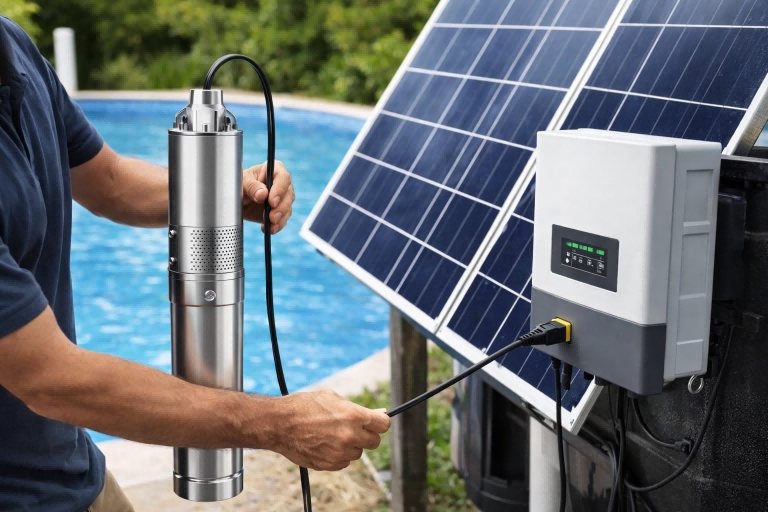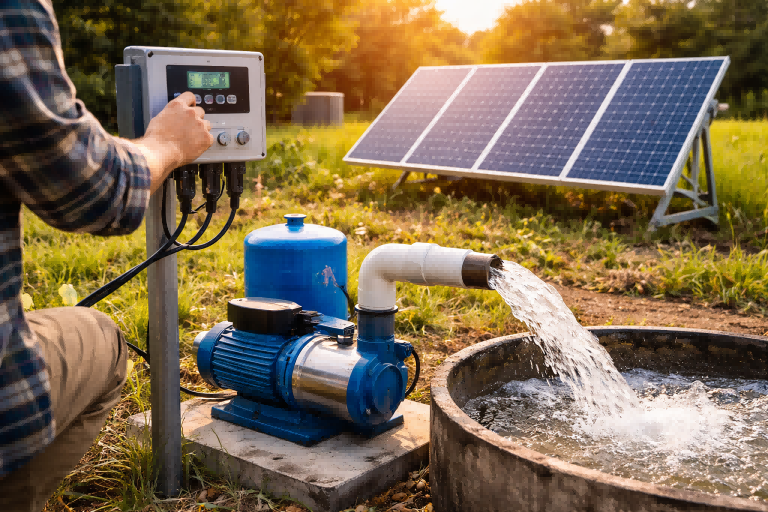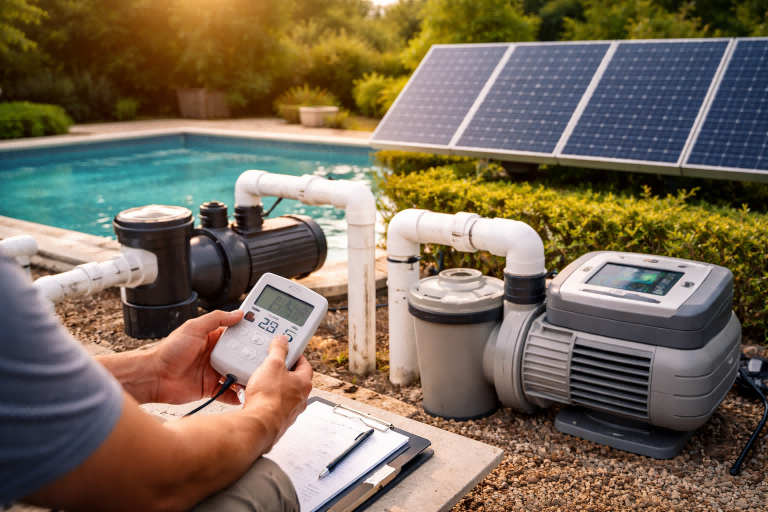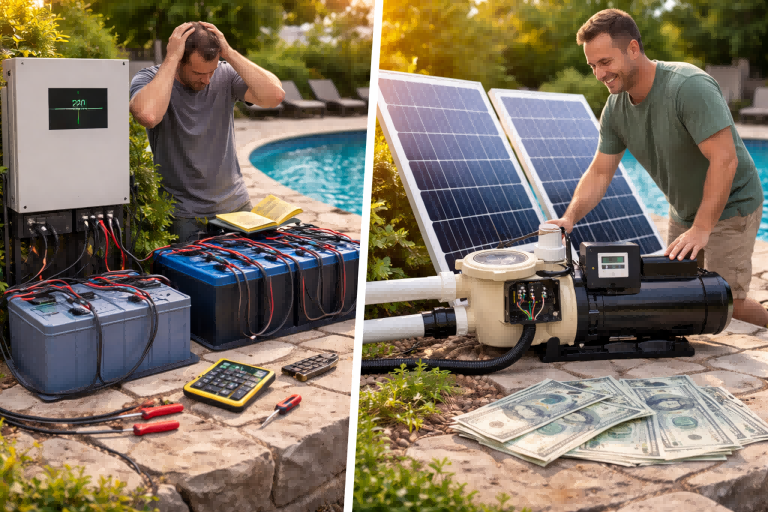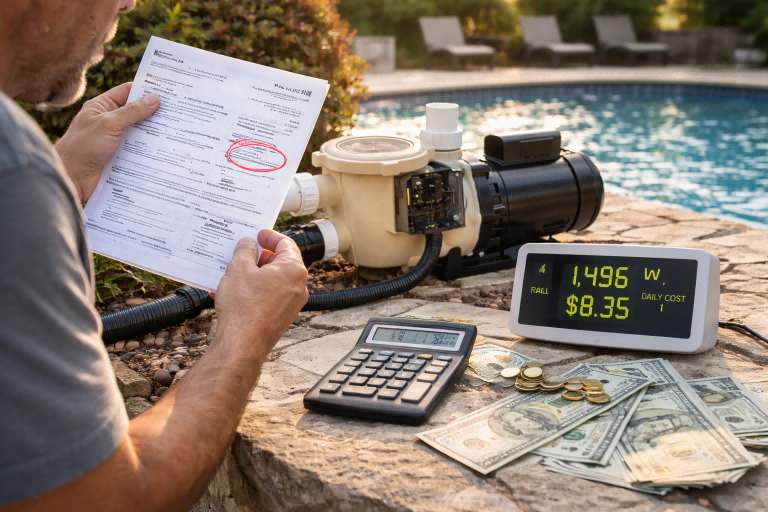Struggling with pump selection for your projects?
The wrong choice can lead to inefficiency and high costs, impacting your bottom line.
Understanding the core types is the first step to a solution.
The three main types of pumps are positive displacement, centrifugal (or rotodynamic), and special-type pumps like gravity or impulse pumps. Each type uses a different mechanism to move fluids and is suited for specific applications, from high-pressure systems to high-flow-rate tasks.
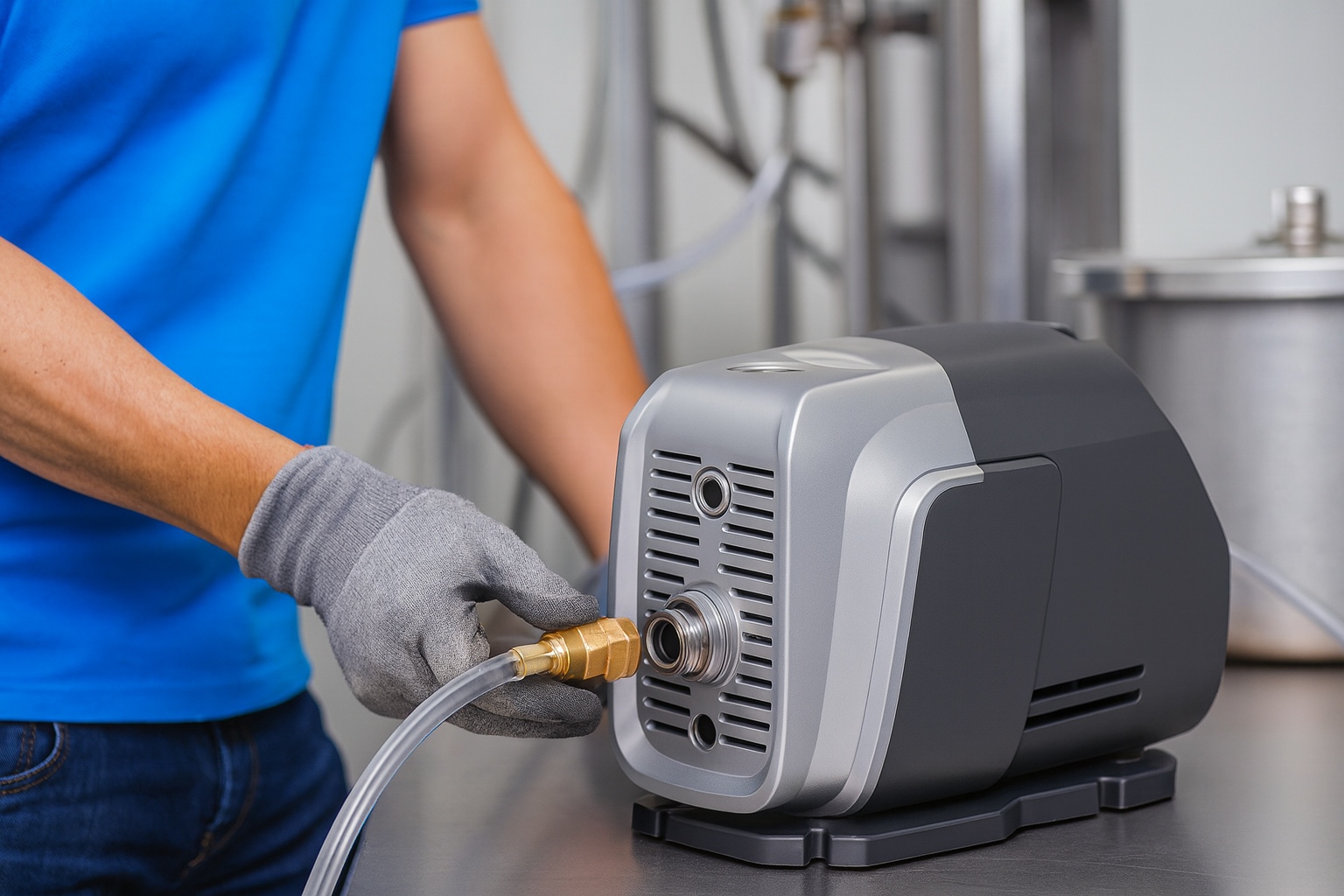
Choosing the right pump is critical for the success of any fluid handling system.
It's not just about moving liquid from point A to point B.
It involves considering factors like fluid viscosity, required pressure, flow rate, and energy efficiency.
This guide will break down these pump categories in detail.
We will explore how they work, where they excel, and what you need to know to make the best choice for your business needs.
Let's dive into the specifics to ensure your next project is both effective and profitable.
Positive Displacement Pumps
Are you dealing with high-viscosity fluids or need precise flow rates?
Inconsistent performance from the wrong pump can disrupt your entire operation.
Positive displacement pumps offer the control you need.
Positive displacement (PD) pumps move fluid by trapping a fixed amount and then forcing (displacing) that trapped volume into the discharge pipe. They are excellent for high-pressure, low-flow applications and can handle viscous liquids and slurries effectively, delivering a constant flow regardless of system pressure.
A Deep Dive into Positive Displacement Pumps
Positive displacement pumps are the workhorses for applications demanding precision and power.
They operate with a simple yet effective principle: a cavity fills with fluid, is sealed off, and then the fluid is forced out.
This mechanism ensures a consistent, measurable flow rate with each cycle.
The flow is directly proportional to the pump's speed.
This makes them ideal for tasks like metering and dosing, where exact volumes are critical.
Unlike centrifugal pumps, a PD pump's output is not significantly affected by changes in pressure on the discharge side.
This characteristic is vital for systems with variable pressure conditions.
Reciprocating Pumps
One of the two main categories of PD pumps is the reciprocating type.
These pumps use a piston, plunger, or diaphragm that moves back and forth in a cylinder.
Piston and Plunger Pumps: These create pressure through a reciprocating piston or plunger. As it moves back, it draws fluid into the cylinder. As it moves forward, it pushes the fluid out. They are capable of generating very high pressures.
Diaphragm Pumps: These use a flexible membrane (diaphragm) to move fluid. The diaphragm flexes, causing the volume of the pumping chamber to increase and decrease. This design is excellent for handling corrosive, toxic, or abrasive fluids because the fluid is completely sealed off from the pump's mechanical parts.
Here is a quick comparison:
| Pump Type | Mechanism | Best For | Common Disadvantage |
|---|---|---|---|
| Piston/Plunger | A reciprocating piston or plunger | Very high-pressure applications, metering. | Creates a pulsating flow that may need dampening. |
| Diaphragm | A flexing membrane | Corrosive, abrasive, or sterile fluids. | Generally lower flow rates and pressures than piston pumps. |
The pulsating flow from reciprocating pumps is a key consideration.
In many applications, a smooth, continuous flow is necessary.
Pulsation dampeners are often installed on the discharge line to absorb the pressure spikes and provide a more stable output.
Rotary Pumps
The second category of PD pumps is rotary.
These pumps use rotating gears, lobes, screws, or vanes to move fluid.
They are generally smoother and produce less pulsation than reciprocating pumps.
They trap fluid between rotating elements and the pump casing, moving it from the inlet to the outlet.
Gear Pumps: These are one of the most common types. They use two meshing gears to transfer fluid. They are simple, compact, and can handle high-viscosity liquids but are sensitive to abrasives.
Lobe Pumps: Similar to gear pumps, but the lobes do not touch. This reduces wear, making them suitable for shear-sensitive products and solids, common in food and pharmaceutical industries.
Vane Pumps: These have vanes mounted to a rotor that rotates inside a cavity. As the rotor turns, the vanes slide in and out to trap fluid and transport it to the discharge side. They excel with low-viscosity liquids.
Screw Pumps: These use one or more intermeshing screws to move fluid along the screw axis. They provide a very smooth, pulsation-free flow and can handle a wide range of viscosities and pressures.
Choosing between reciprocating and rotary types depends heavily on the application's specific demands.
If your system requires extremely high pressure for a low-viscosity fluid, a plunger pump might be the best fit.
If you need a smooth, pulsation-free flow for a delicate or shear-sensitive product, a lobe or screw pump is a superior choice.
The key takeaway is that positive displacement pumps deliver a fixed amount of fluid with each cycle.
This makes them highly predictable and reliable for precision tasks.
Centrifugal Pumps
Need to move large volumes of low-viscosity liquid quickly?
Using the wrong pump type can lead to poor performance and high energy bills.
Centrifugal pumps are the industry standard for high-flow applications.
Centrifugal pumps, a type of rotodynamic pump, use rotational energy from a motor to move fluid. An impeller spins, converting velocity into pressure and forcing the liquid out. They are ideal for high-flow, low-pressure applications and efficiently handle low-viscosity fluids like water.
A Deep Dive into Centrifugal Pumps
Centrifugal pumps are the most common type of pump used in the world today.
They account for a vast majority of pump installations across various industries.
Their popularity stems from their simple design, high efficiency, and ability to handle large flow rates.
The core of a centrifugal pump is the impeller.
This is a rotor with a series of vanes or blades.
When the impeller rotates at high speed, it imparts kinetic energy to the fluid.
The fluid is thrown outward by centrifugal force.
It then enters a diffuser or a spiral-shaped casing called a volute.
The volute is designed to slow the fluid down.
As the fluid decelerates, its kinetic energy (velocity) is converted into potential energy (pressure).
This process generates the flow and pressure needed to move the liquid through the system.
Key Components and Operation
Understanding the main parts of a centrifugal pump helps clarify its operation.
Impeller: The rotating component that transfers energy from the motor to the fluid. Impellers come in various designs (open, semi-open, closed) to handle different types of liquids, including those with solids.
Casing (Volute): The stationary part that surrounds the impeller. It collects the fluid from the impeller and directs it to the discharge nozzle, converting velocity to pressure in the process.
Shaft and Bearings: The shaft transmits torque from the motor to the impeller, and the bearings support the shaft, allowing it to rotate smoothly with minimal friction.
Seals: Mechanical seals or packing prevent the fluid from leaking out of the pump along the shaft.
Unlike positive displacement pumps, the flow rate of a centrifugal pump is highly dependent on system pressure.
An increase in system pressure (also known as head) will cause a decrease in the flow rate.
This relationship is described by the pump's performance curve.
Types of Centrifugal Pumps
Centrifugal pumps can be categorized based on their design and application.
Flow Direction
How the fluid exits the impeller determines the primary classification.
- Radial Flow: The fluid is discharged at a 90-degree angle to the shaft axis. This design is common for creating high pressure.
- Axial Flow: The fluid flows parallel to the pump shaft. These are essentially propellers in a pipe, designed for very high flow rates at very low pressure.
- Mixed Flow: A combination of radial and axial flow. The fluid exits the impeller at an angle between 0 and 90 degrees. This provides a balance between high flow and moderate pressure.
Number of Stages
A "stage" refers to a single impeller and its associated diffuser or volute.
- Single-Stage Pumps: Contain only one impeller. They are simple, common, and suitable for a wide range of applications where a large pressure increase is not needed.
- Multi-Stage Pumps: Have multiple impellers in series within the same casing. The fluid is discharged from one impeller and immediately enters the suction of the next. Each stage adds more pressure (head), making these pumps ideal for high-pressure services like boiler feed water or reverse osmosis. The multistage pump is a prime example of this technology in action.
Modern Advancements: The Rise of VSD
A significant evolution in pump technology is the integration of Variable Speed Drives (VSDs), also known as Variable Frequency Drives (VFDs).
A VSD booster pump or inverter booster pump automatically adjusts the motor's speed to match the system's demand.
This offers several compelling advantages.
| Feature | Traditional Fixed-Speed Pump | Variable Speed Drive (VSD) Pump |
|---|---|---|
| Energy Consumption | Runs at full speed, often throttling flow with a valve, wasting energy. | Adjusts speed to meet demand, significantly reducing energy use (up to 50%). |
| Pressure Control | Pressure fluctuates with demand, leading to system stress. | Maintains a precise, constant pressure regardless of flow changes. |
| Mechanical Wear | Frequent start/stop cycles and high-speed operation cause wear and tear. | Soft starts and optimized speed reduce stress on pump and motor components. |
| Noise Level | Operates at maximum speed and noise level continuously. | Runs quieter as the speed is modulated based on actual need. |
An intelligent permanent magnet variable frequency pump represents the peak of this technology.
It combines a highly efficient permanent magnet motor with advanced VSD controls.
This creates a smart system that provides reliable, constant pressure water supply while minimizing operational costs.
For applications like residential buildings or commercial complexes, a constant pressure booster pump with VSD technology is now the preferred solution.
It ensures user comfort and protects plumbing infrastructure from pressure surges.
Special-Type Pumps
What if your application doesn't fit a standard pump model?
Using a generic pump can be inefficient and ineffective for unique tasks.
Special-type pumps are designed for these specific, challenging scenarios.
Special-type pumps cover a range of designs that operate on principles different from positive displacement or centrifugal action. These include jet pumps, submersible pumps, and airlift pumps, each engineered to solve unique fluid-handling challenges where conventional pumps may not be suitable.
A Deep Dive into Special-Type Pumps
The world of fluid handling is incredibly diverse.
Sometimes, the properties of the fluid, the operating environment, or the specific task demand a unique solution.
This is where special-type pumps come into play.
They don't always fit neatly into the PD or centrifugal categories.
Their operating principles can be based on momentum transfer, buoyancy, or electromagnetic forces.
Let's explore some of the most prominent special-type pumps and the problems they solve.
Jet Pumps (Ejector Pumps)
Jet pumps are fascinating because they have no moving parts.
They use the Venturi effect to move fluid.
A high-velocity jet of one fluid (the motive fluid) is injected through a nozzle into a pipe.
This creates a low-pressure zone that draws in a second fluid (the suction fluid).
The two fluids then mix and pass through a diffuser, which slows them down and converts their velocity back into pressure.
Key Applications for Jet Pumps
- Deep Well Pumping: Often used in combination with a surface-mounted centrifugal pump to draw water from wells deeper than the practical suction lift limit (around 25 feet). The surface pump sends some water back down the well as the motive fluid.
- Priming: They can be used to prime larger centrifugal pumps that cannot self-prime.
- Mixing and Blending: Excellent for mixing two different fluids.
They are reliable due to their simple construction but are generally less efficient than mechanical pumps.
Submersible Pumps
As the name suggests, a submersible pump is designed to be fully submerged in the fluid it is pumping.
It's a tightly sealed unit containing both the pump and the motor.
Most submersible pumps are multi-stage centrifugal pumps.
The key advantage is that they don't need to be primed because they are already submerged in the fluid.
They push the fluid to the surface rather than pulling it.
This is a much more efficient way to lift liquids from great depths.
Common Uses for Submersible Pumps
| Application | Description | Pump Type Examples |
|---|---|---|
| Deep Wells | Lifting water from residential, commercial, or agricultural wells. | Deep well pumps. |
| Drainage (Dewatering) | Removing unwanted water from construction sites, mines, or flooded areas. | Sump pumps, dewatering pumps. |
| Wastewater | Pumping sewage and effluent in municipal and industrial treatment plants. | Grinder pumps, effluent pumps. |
| Offshore Oil & Gas | Used for artificial lift to bring oil to the surface. | Electric Submersible Pumps (ESPs). |
The solar water pump is a popular modern variation of the submersible pump.
It is powered by photovoltaic panels, making it an excellent solution for irrigation and water supply in remote, off-grid locations.
Airlift Pumps
Airlift pumps are another type with no moving parts below the surface.
They operate by injecting compressed air into the bottom of a pipe submerged in liquid.
The air mixes with the liquid, forming bubbles.
This air-liquid mixture has a lower density than the liquid outside the pipe.
The surrounding, denser liquid exerts pressure, pushing the lighter mixture up the pipe and out.
They are simple and reliable but have limited lift height and efficiency.
Their main advantage is the ability to handle highly abrasive or corrosive liquids and slurries that would quickly damage a mechanical pump.
They are often used in dredging operations, wastewater treatment, and archaeology.
Choosing the right special-type pump requires a thorough understanding of the specific challenge.
Whether it's lifting water from a deep well with a submersible pump or creating a vacuum with a jet pump, these specialized tools provide effective solutions where standard pumps fall short.
Conclusion
Understanding positive displacement, centrifugal, and special-type pumps is key.
This knowledge ensures you select the most efficient and reliable solution for any application.
FAQs
What is the most common type of pump?
Centrifugal pumps are the most common type used globally. Their simple design and efficiency in moving low-viscosity fluids like water make them ideal for countless applications.
What is the difference between a pump and a motor?
A pump moves fluids or gases by mechanical action. A motor is a device that converts electrical energy into the mechanical energy needed to power the pump.
How do I choose a pump?
To choose a pump, consider the fluid type (viscosity, abrasiveness), required flow rate, and pressure (head). Matching these needs to a pump's performance curve is essential.
Can a pump run without water?
Running a pump without water, known as running dry, can cause severe damage. The water acts as a lubricant and coolant for the pump's seals and internal components.
What are the 2 main types of pumps?
The two broadest categories are positive displacement (PD) pumps and dynamic (centrifugal) pumps. They are distinguished by their fundamental method of moving fluid.
What is the difference between a booster pump and a centrifugal pump?
A booster pump is an application-specific pump designed to increase pressure in an existing system. It is very often a type of centrifugal pump, like a multistage centrifugal pump.
What is the difference between a VFD pump and a booster pump?
A VFD (Variable Frequency Drive) pump is a pump system that can vary its motor speed. A booster pump increases system pressure; it can be a fixed-speed or a VFD pump.
What is the difference between a water pump and a booster pump?
A water pump is a general term for any device that moves water. A booster pump is a specific type of water pump used to increase the pressure of water already flowing in a pipeline.


